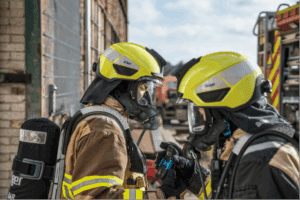Improved firefighting robots help save lives
A new design in firefighting robots, already successfully tested in the field, could make firefighters’ jobs less dangerous and address one of the biggest challenges with firefighting robots – the ability to manoeuvre in a burning structure.
Firefighting robots equipped with a new automatic T-valve system can remove water from the fire hose whenever the robot moves to a new location. The technology takes significantly less energy for firefighters to pull an empty fire hose compared with a water-filled fire hose, which enables the firefighting robot to manoeuvre more quickly and efficiently in and around a burning structure. Purdue University researchers developed the technology.
“This discharge valve invention could be the next transformation of the fire service that saves lives,” said Eric Dietz, Director of the Purdue Homeland Security Institute and a professor of computer and information technology in the Purdue Polytechnic Institute.
“This invention further enables the firefighting robot by adding to the robot mobility and saving lives within the fire service and, most importantly, with the public. With this improvement, the firefighting robots are better able to save lives and protect property.”
Dietz said the Purdue invention improves the efficiency of a firefighting robot by reducing the weight and power consumption while improving the mobility of a robot to close the potential gap between the machine and a human fighter.
According to Dietz, with the addition of the Purdue T-valve design, the robot can be lighter, more mobile and have battery capacity for a longer mission, since its manoeuvre does not require pulling a fully charged fire hose. He said robots with the T-valve system might be used in conditions not stable or safe enough for a human firefighter entry.
“During my time in this position, we had a number of firefighter deaths in structure fires where the structures were not occupied,” Dietz said. “We also struggled to maintain youth volunteer firefighter numbers sufficient to protect the public. This enhancement to the firefighting robot concept can solve those issues while saving lives.”




































